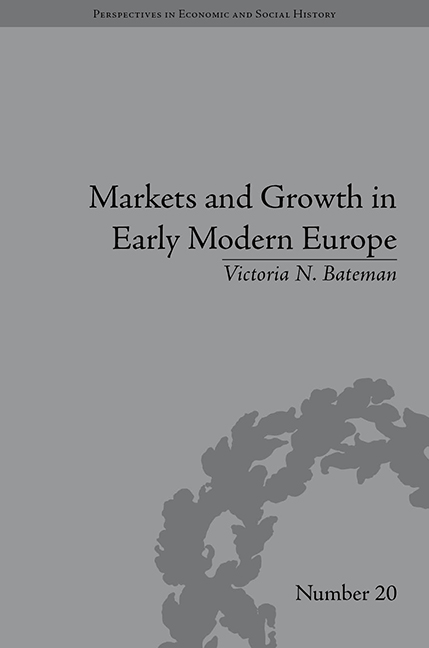Book contents
- Frontmatter
- CONTENTS
- List of Figures and Tables
- Acknowledgements
- Preface
- Introduction
- 1 Markets in History: A Survey
- 2 The Course of Early Modern Market Integration: Country-Level Results
- 3 The Course of Early Modern Market Integration: The Mediterranean and the North-West Region
- 4 Early Modern Market Integration in a Longer Run Perspective
- 5 The Causes of Early Modern Market Integration and Disintegration
- 6 The Consequences of Early Modern Markets: An Examination of the Relationship between Markets and Economic Growth
- 7 Conclusions and Implications for Economic Policy and the Modern Day
- Notes
- Works Cited
- Index
5 - The Causes of Early Modern Market Integration and Disintegration
- Frontmatter
- CONTENTS
- List of Figures and Tables
- Acknowledgements
- Preface
- Introduction
- 1 Markets in History: A Survey
- 2 The Course of Early Modern Market Integration: Country-Level Results
- 3 The Course of Early Modern Market Integration: The Mediterranean and the North-West Region
- 4 Early Modern Market Integration in a Longer Run Perspective
- 5 The Causes of Early Modern Market Integration and Disintegration
- 6 The Consequences of Early Modern Markets: An Examination of the Relationship between Markets and Economic Growth
- 7 Conclusions and Implications for Economic Policy and the Modern Day
- Notes
- Works Cited
- Index
Summary
Why were English, Belgian and Dutch markets well developed early on? Why did Belgian markets subsequently disintegrate? At the same time, why did French and Italian markets improve? In an effort to answer such questions, this chapter seeks to uncover the factors affecting markets in early modern Europe. The first section considers the elements which are commonly thought to affect markets through their impact on the costs of exchange, including geography, population density and institutions. It uses the set of market estimates from the previous chapters to calculate the size and strength of the impact of each factor in turn. Using the findings, the next section goes on to explain the differences in the level of market development between the countries of early modern Europe. The chapter concludes by suggesting that market development should be thought of as a virtuous circle. Many of the factors that are commonly treated as drivers of market development are in part a result of market development, providing a positive feedback process that can help us understand how markets develop to sophisticated heights in some places but not others.
The Determinants of Market Development
When trade is costly, individuals have little incentive to use the market. They will instead obtain the means of subsistence by producing for themselves the food to feed their bellies, the shelter in which to keep safe and the clothes in which to keep warm.
- Type
- Chapter
- Information
- Markets and Growth in Early Modern Europe , pp. 125 - 148Publisher: Pickering & ChattoFirst published in: 2014



